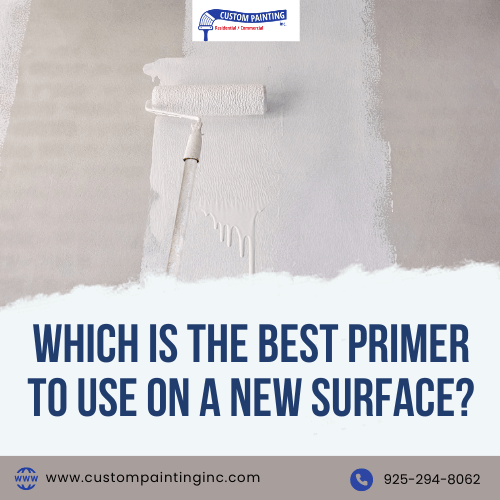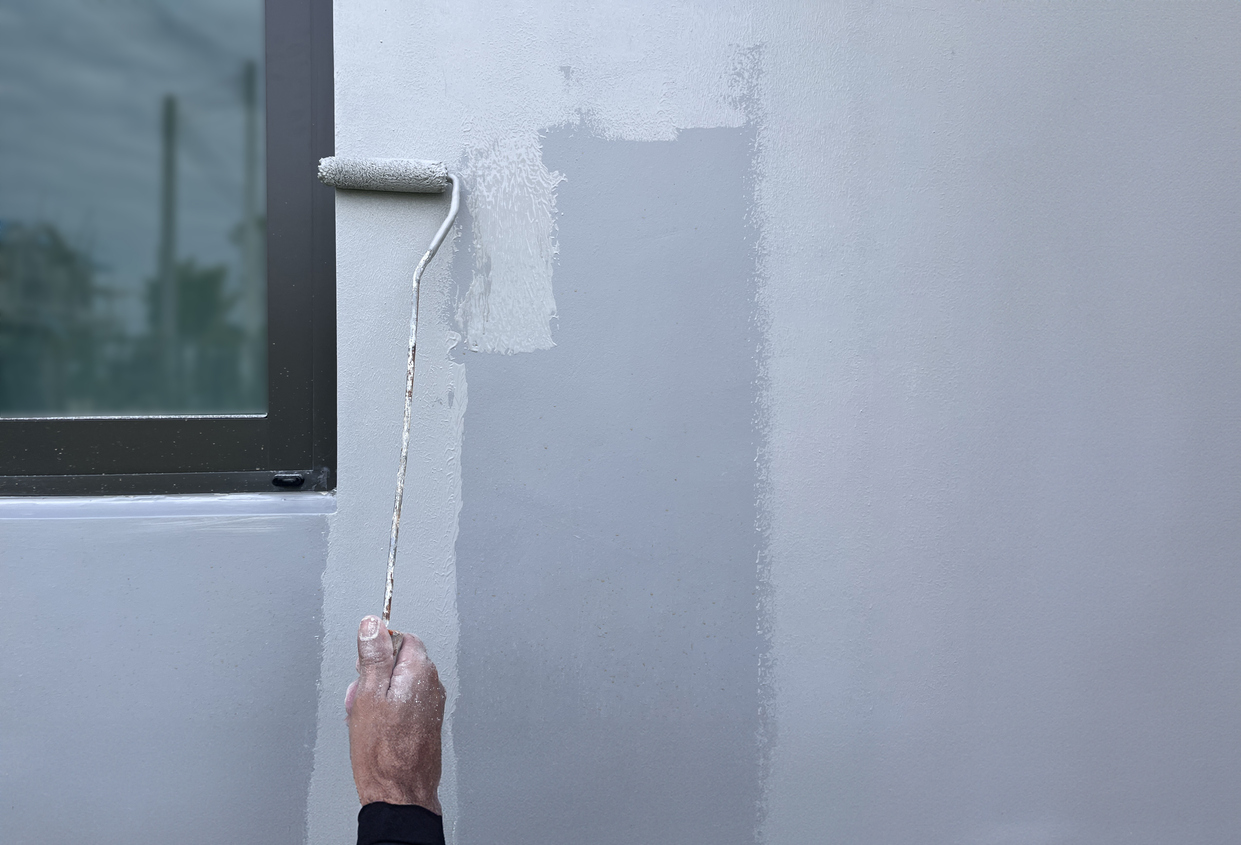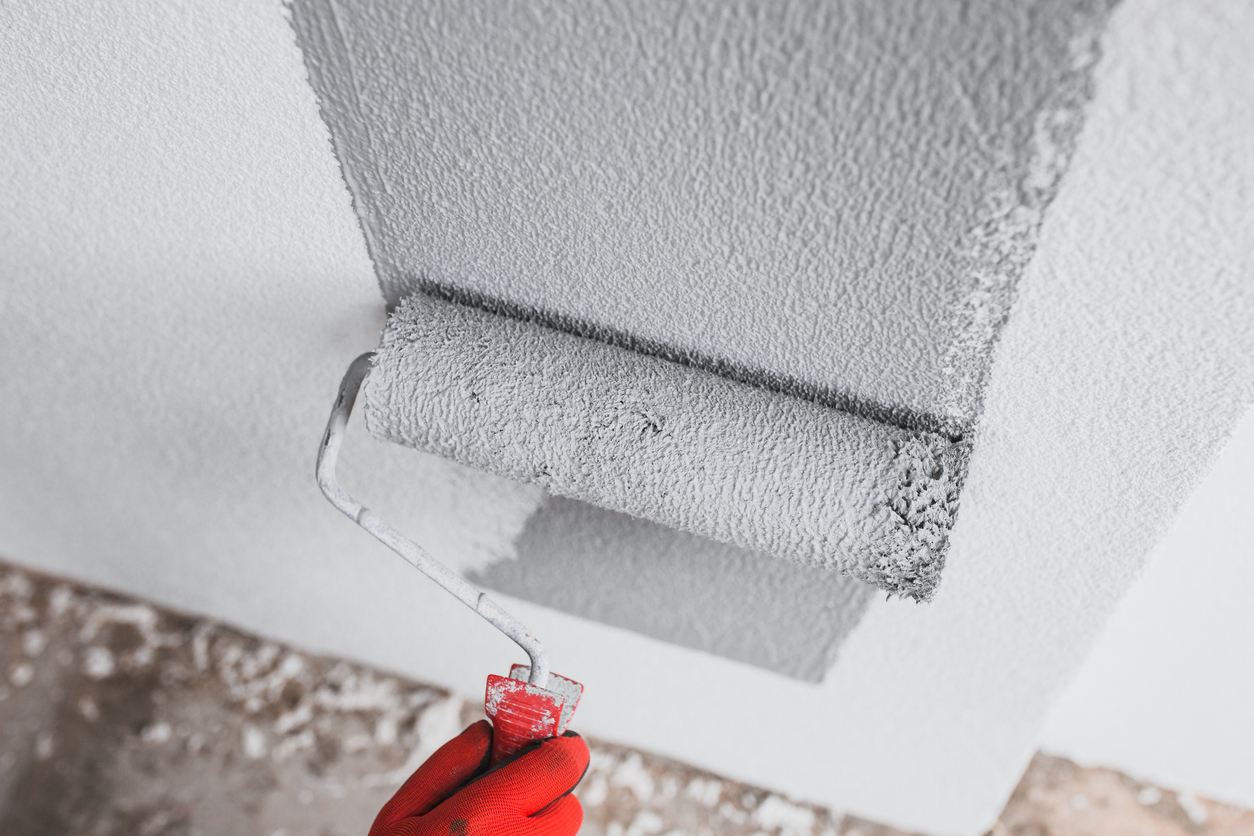Do you have a new house or a new extension for a recently built house? Congratulations! Once the construction is done, painting is the next exciting step before you can use the space.
However, when you paint on a new surface, priming is an essential step before using your preferred paint colors. Whether you’re about to paint drywall, wood, masonry, or metal, choosing the right primer can make all the difference.
What is Primer and Its Benefits?
Think of primer as a foundation for any great paint job. It’s a preparatory coating applied onto the surface before applying the finishing paint.
There is not one type of primer—there are many kinds, each formulated for different surfaces. New surfaces are porous, which means they can soak up a lot of paint, affecting the final result by the natural color of the surface. This is why you need a primer.
Primers have several key benefits:
- It has adhesive qualities. Primers create a strong bond between the surface and the paint, ensuring that your paint sticks appropriately and doesn’t peel or chip over time.
- It blocks stains. If you’re dealing with surfaces with stains from water, smoke, or other substances, a good primer can seal them, preventing them from bleeding through your final coat of paint.
- It can make your paint job durable. Using a primer can make your paint job last much longer. It adds an extra layer of protection, helping your paint withstand wear and tear and keeping your walls looking fresh and new for years.
- It allows for even coverage. Primers help to even out your painting surface, filling in small imperfections and creating a smooth base. This means that your final coat of paint will go on more evenly and look more professional.
- It makes the paint color vibrant. Primers can enhance the vibrancy of your paint color. By providing a uniform base, primers ensure that the true color of your paint comes through without being affected by the underlying surface.
The Best Primers for New Drywall
Using the suitable primer for new drywall ensures a solid foundation for your paint. When painting drywall, here are your best options:
1. Latex Primer
Latex primers, often water-based primers, are excellent for new drywall. They offer good coverage, low levels of volatile organic compounds (VOCs), and are safer for indoor use due to fewer toxic fumes.
Recommended Products:
- Zinsser Bulls Eye 1-2-3: A versatile primer that adheres well to new drywall and provides excellent coverage.
- KILZ 2 Latex Primer: Known for its fast-drying and low-VOC formula, it seals and prepares drywall efficiently.
2. Polyvinyl Acetate (PVA) Primer
PVA primers are specifically designed for new, unpainted drywall. They seal the pores of the drywall surface quickly and can be sanded for a smooth finish.
Recommended Products:
- Glidden PVA Drywall Primer: Excellent for sealing new drywall and providing a smooth base for paint.
- Behr Drywall Plus Primer & Sealer: This product is easy to apply, seals nicely, and sands easily for a perfect finish.
The Best Primers for New Wood Surfaces
Using the right primer for bare wood surfaces ensures a professional-looking paint job and enhances the longevity and appearance of your woodwork.
1. Water-Based Primers (Latex)
Water-based or latex primers are perfect for bare wood surfaces. They are flexible, fast-drying, and less prone to yellowing, peeling, and cracking compared to oil-based primers. Latex primers are especially suitable for softwood like pine.
Recommended Products:
- Zinsser Bulls Eye 1-2-3: A versatile water-based primer that provides excellent adhesion and a smooth base for paint.
- KILZ Premium High-Hide Stain Blocking Latex Primer: This primer is known for its superior sealing properties and stain-blocking ability, making it ideal for bare wood.
The Best Primers for Masonry
The issue with masonry is that without primer, paint can peel or adhere poorly. You need an appropriate primer to ensure a smooth, durable, and professional finish.
1. Masonry Primer
Masonry primers are formulated for bare masonry surfaces such as bricks, concrete, limestone, and adobe. They create a barrier between the surface and the topcoat, preventing absorption and ensuring a smooth, solid finish.
Recommended Products:
- Behr Concrete & Masonry Bonding Primer: Ideal for both interior and exterior masonry surfaces, providing excellent adhesion and a durable base for paint.
- KILZ L211101 Adhesion High-Bonding Interior/Exterior Primer: Known for its strong adhesion properties and versatility.
2. Epoxy Primer
Epoxy primers bond well to masonry surfaces through a chemical reaction during mixing. Once applied, they penetrate the pores and create a tough, durable surface ready for painting.
Recommended Products:
- Rust-Oleum 60001 Epoxy Shield: Provides a high-performance, durable coating for masonry surfaces.
- Sherwin-Williams Tile-Clad Epoxy Primer: Offers excellent adhesion and long-lasting protection for masonry surfaces.
The Best Primers for New Metal Surfaces
Using the suitable primer for metal surfaces ensures strong adhesion and protection against rust, leading to a long-lasting and durable paint finish. For metal surfaces, here are your best options:
1. Iron Oxide Primer
Iron oxide primers are ideal for new and untreated metals like wrought iron. They inhibit rust, making them perfect for metals exposed to moisture and prone to corrosion.
Recommended Products:
- Rust-Oleum Rusty Metal Primer: Provides excellent rust protection and is great for heavily rusted metal.
- KILZ Original Multi-Surface Primer: Offers strong adhesion and rust-inhibiting properties.
2. Etching Primer
Etching primers are designed for non-ferrous metals (aluminum, copper, lead, nickel, titanium, zinc) and galvanized surfaces. They “etch” the slick metal surface, creating a texture that paint can adhere to.
Recommended Products:
- Rust-Oleum Self-Etching Primer: Ideal for aluminum and other non-ferrous metals, providing a superior bond for topcoats.
- Dupli-Color Scratch Filler & Primer: Works well on various metals, including galvanized surfaces.
Specialty Primers
Primers for Specific Conditions
Some projects require primers designed for particular conditions. For example, high-humidity areas, like bathrooms, need moisture-resistant primers. Opt for primers that provide extra durability and weather resistance for exterior surfaces exposed to the elements.
Eco-friendly Primer Options
If you’re environmentally conscious, look for eco-friendly primers. These products have low or zero VOCs, emitting fewer harmful fumes, making them safer for the environment and indoor air quality.
Choosing the Right Primer
Selecting the right primer depends on several factors:
- Surface Type: Different surfaces (wood, metal, drywall, masonry) need different primers.
- Paint Type: Ensure the primer and the paint you plan to use is compatible.
- Environmental Conditions: Consider factors like humidity, temperature, and exposure to the elements.
Before committing, do a small test patch to ensure the primer adheres well and works as expected. This can save you time and effort in the long run.
Conclusion
Remember, the right primer makes all the difference in achieving a professional finish. Properly priming drywall, wood, masonry, and metal ensures a smooth, durable paint job that stands the test of time.
If you’re ever in doubt or want a flawless result, consider hiring Custom Painting, Inc. to paint your new home or new space. Our experienced team is ready to help you achieve the perfect paint job for any project. Contact us today at 510-795-0903 or fill out our contact form to get started!



